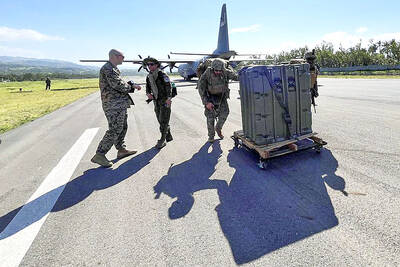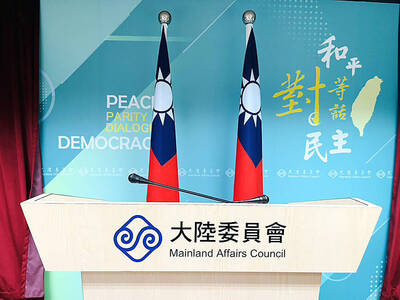The government plans to change the voltage for home appliances from 110 to 220 to save electricity and comply with world norms, a Chinese-language newspaper said yesterday.
The newspaper said the state-run Taiwan Power Co has completed an evaluation of volt conversion. It is now up to the Ministry of Economic's Energy Commission to decide when to launch the project.
"South Korea has begun the conversion and Japan will follow suit. If Taiwan sticks with the 110v, it will become the `orphan among world electric appliances,'" the paper said.
In European countries, home appliances use 220v. In this country, all home appliances use 110v except air conditioning systems which use 220v.
"Taiwan began to consider voltage conversion more than 10 years ago, but has not taken the step yet. Now that South Korea has almost finished volt conversion, the government is in a hurry," it said.
South Korea finished its evaluation of voltage conversion in 1963, launched the conversion in 1973, halted production of 100v machines and equipment in 1978, introduced dual-volt in 1980 and completed volt conversion for 1,100 homes in 1995, the newspaper said.
South Korea hopes to finish voltage conversion for all homes before 2005, the paper said.
Taiwan, Japan, China and many other Asian countries still use 110v.

Three batches of banana sauce imported from the Philippines were intercepted at the border after they were found to contain the banned industrial dye Orange G, the Food and Drug Administration (FDA) said yesterday. From today through Sept. 2 next year, all seasoning sauces from the Philippines are to be subject to the FDA’s strictest border inspection, meaning 100 percent testing for illegal dyes before entry is allowed, it said in a statement. Orange G is an industrial coloring agent that is not permitted for food use in Taiwan or internationally, said Cheng Wei-chih (鄭維智), head of the FDA’s Northern Center for

LOOKING NORTH: The base would enhance the military’s awareness of activities in the Bashi Channel, which China Coast Guard ships have been frequenting, an expert said The Philippine Navy on Thursday last week inaugurated a forward operating base in the country’s northern most province of Batanes, which at 185km from Taiwan would be strategically important in a military conflict in the Taiwan Strait. The Philippine Daily Inquirer quoted Northern Luzon Command Commander Lieutenant General Fernyl Buca as saying that the base in Mahatao would bolster the country’s northern defenses and response capabilities. The base is also a response to the “irregular presence this month of armed” of China Coast Guard vessels frequenting the Bashi Channel in the Luzon Strait just south of Taiwan, the paper reported, citing a

The Chinese military has built landing bridge ships designed to expand its amphibious options for a potential assault on Taiwan, but their combat effectiveness is limited due to their high vulnerability, a defense expert said in an analysis published on Monday. Shen Ming-shih (沈明室), a research fellow at the Institute for National Defense and Security Research, said that the deployment of such vessels as part of the Chinese People’s Liberation Army (PLA) Navy’s East Sea Fleet signals a strong focus on Taiwan. However, the ships are highly vulnerable to precision strikes, which means they could be destroyed before they achieve their intended

UNDER PRESSURE: The report cited numerous events that have happened this year to show increased coercion from China, such as military drills and legal threats The Chinese Communist Party (CCP) aims to reinforce its “one China” principle and the idea that Taiwan belongs to the People’s Republic of China by hosting celebratory events this year for the 80th anniversary of the end of World War II, the “retrocession” of Taiwan and the establishment of the UN, the Mainland Affairs Council (MAC) said in its latest report to the Legislative Yuan. Taking advantage of the significant anniversaries, Chinese officials are attempting to assert China’s sovereignty over Taiwan through interviews with international news media and cross-strait exchange events, the report said. Beijing intends to reinforce its “one China” principle